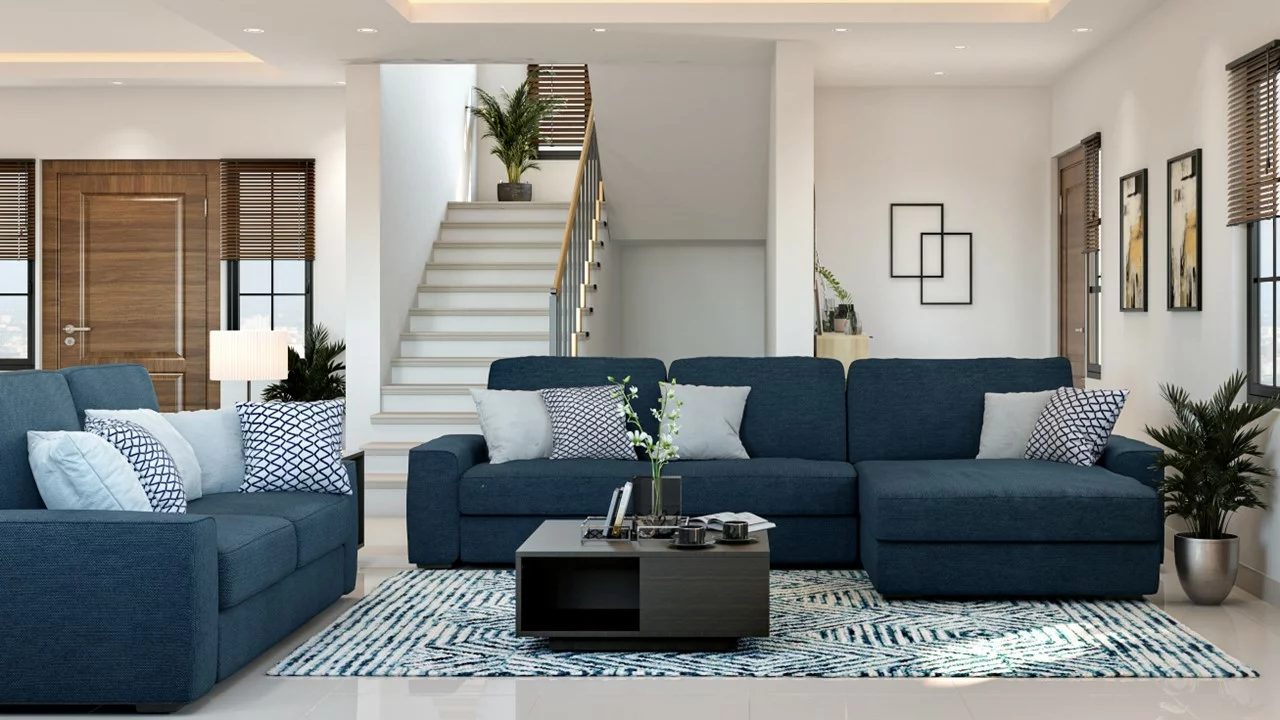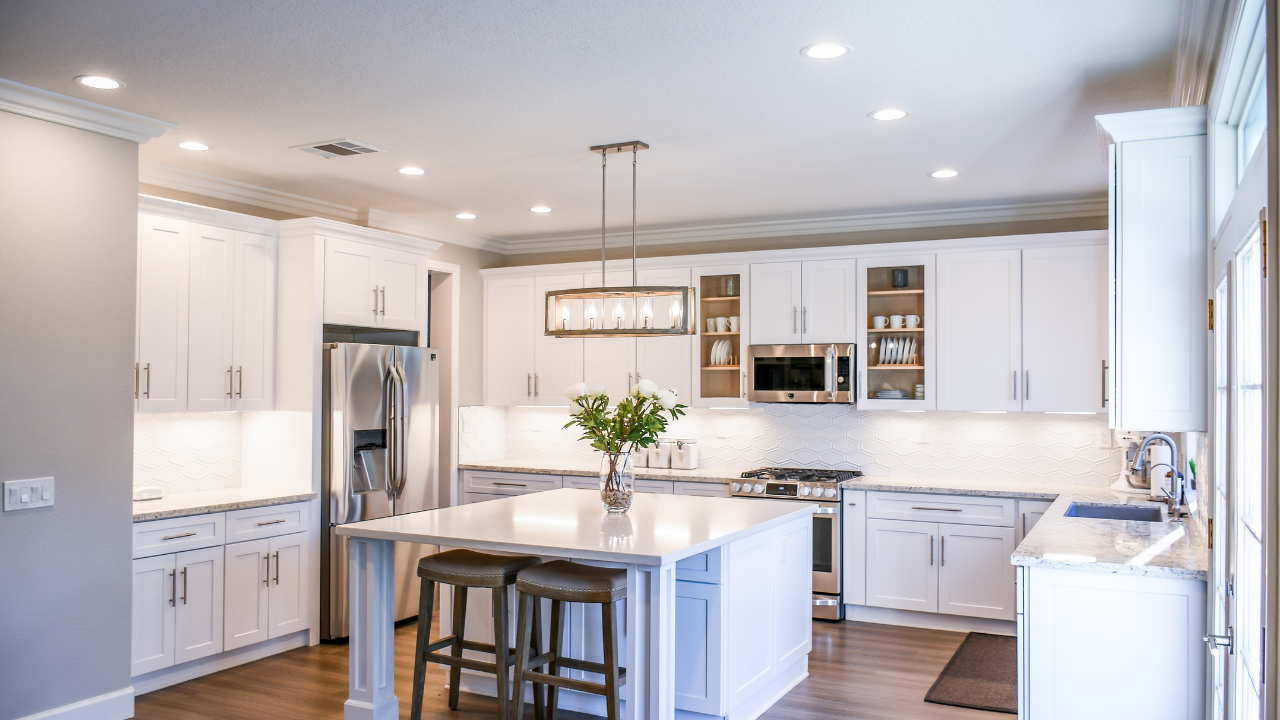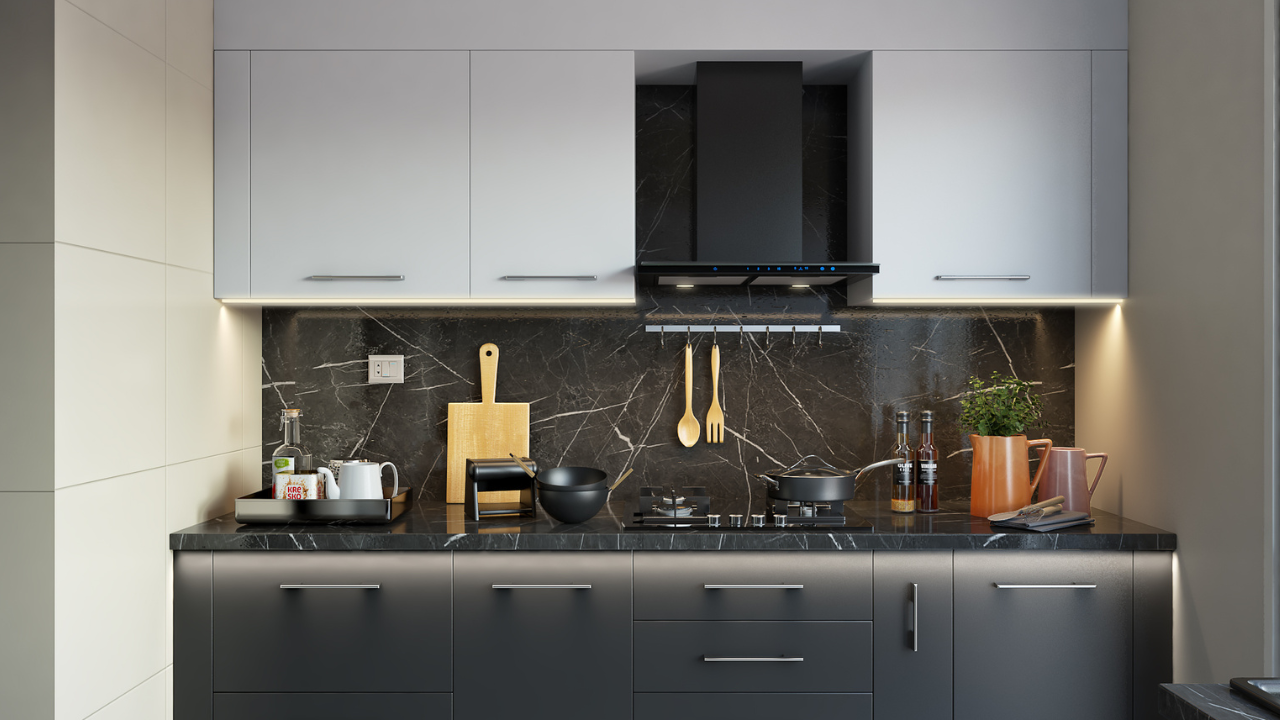How To Accessorise Living Room – Tips & Styling Guide

The living room is not just about the furniture or the colour of the walls; it’s the little variations, the thoughtful touches, and the personalised elements that truly transform a space from a room to your sanctuary’. Whether your style is modern, traditional, eclectic, or somewhere in between, accessorising your living room is key to bringing it all together. Here are tips and a styling guide to help you accessorise your living room with finesse.
1. Start with a Focal Point:
Why is a Focal Point Important?
A focal point effortlessly draws the eye, providing a room with an immediate sense of purpose and direction. It eliminates feeling overwhelmed or aimless amidst a sea of decorative elements. Instead, it allows for a structured approach to design, ensuring everything else complements or contrasts beautifully with this central piece.
Types of Focal Points:
- Artwork: A thought-provoking painting or a mesmerising sculpture can make for a splendid focal point. The key is choosing something that resonates with you and your desired mood for the room.
- Fireplace: Classic, warm, and inviting, a grand fireplace isn’t just a source of warmth and a visual magnet. Whether adorned with a vintage mantelpiece or designed with sleek, modern lines, it often becomes the natural centre of gravity in a room.
- Coffee Table: More than a functional piece, an exquisite coffee table can be an art statement. Think of unique designs, materials, or even a curated collection of trinkets atop it.
- Statement Sofa: Furniture can be both functional and attention-grabbing. A sofa in a unique design, vibrant colour, or luxurious fabric can easily take centre stage.
- Theme: Ensure that the surrounding elements align with the theme set by the focal point. A vintage fireplace might pair well with antique decor, while a modern art piece would resonate with modern furnishings.
2. Layer Textures and Fabrics:
- Soft Textures: Luxurious and plush, velvet can instantly elevate any space. Lustrous and smooth silk curtains can add an element of sophistication.
- Rugged Textures: Earthy and rustic, jute rugs can ground a space and make it feel cosy. Wool offers warmth and richness in throws or carpets.
- Sleek Textures: Leather, especially in darker shades, can add a touch of masculine elegance. Ottomans, couches, or even throw pillows in leather can be very impactful. Metal accents, like lamp bases or decorative pieces, introduce a cool sleekness.
- Organic Textures: From polished to distressed, wood brings warmth and nature into a room. Stone countertops, decorative pieces, or even walls can add an enduring, earthy element.
- Rugs and Carpets: Beyond softening a room and adding warmth underfoot, rugs can demarcate spaces, especially in open-plan areas, and complement the overall colour scheme.
- Curtains and Drapes: Dictate how natural light enters a room. Light, sheer fabrics can give an airy feel, while thicker drapes add drama and can be insulating.
- Throw Blankets: Draped over a sofa or chair, they add an inviting layer of warmth and can introduce new patterns and textures.
3. Play with Colours:
The Power of Colour:
- Mood Setting: Every colour has an emotion attached to it. While blues can be calming, reds are often invigorating. Yellows might instil cheerfulness, and greens are harmonious, reflecting nature.
- Space Alteration: Colours can make a room feel bigger or smaller. Light shades can expand a space visually, while darker tones make it feel more intimate.
- Theme Creation: Whether you’re going for a beachy vibe, rustic feel, or an ultramodern look, colour plays a pivotal role in setting the theme.
Balancing a Room with Colours:
- Neutral Accents: Introduce beige, white, or grey accessories. A neutral rug or white throw can counteract a room with solid colours.
- Monochrome Magic: If your room is blue, play with different shades. Use navy cushions, sky-blue vases, or teal throws. This creates depth without introducing a new colour to balance.
- Natural Elements: Wood, stone, and green plants can neutralise elements in a colourful room. A wooden coffee table or green indoor plants can provide visual relief.
- Metallics as Neutrals: Gold, silver, and brass, often considered neutrals in interior design, can break the colour monotony. A silver lamp or a brass tray can be both chic and balanced.
4. Incorporate Personal Elements:
Personnel elements imbued with memories and sentiments range from cherished family photographs capturing fleeting moments to heirlooms passed down through generations echoing tales of yesteryears to travel souvenirs that serve as tangible reminders of adventures and experiences. Similarly, books, often seen primarily as vessels of knowledge, can be reimagined as decorative elements. Their vibrant spines, artistic covers, and varied sizes can be meticulously arranged on shelves, stacked artfully on coffee tables, or innovatively used as stands.
A fiddle leaf fig can transform an empty corner into a nature-inspired nook, while smaller potted plants can enliven tables or shelves with subtle charm. Further enhancing the room’s functionality and aesthetic are woven baskets. Their organic, tactile nature adds a rustic charm, making them ideal for storing essentials, from cosy blankets perfect for snuggling to magazines for leisurely reads to toys, ensuring a clutter-free space.
5. Play with Heights and Scales:

Furniture Arrangement: Instead of having furniture pieces of similar heights, aim for a mix. Pair a low-lying coffee table with a taller bookshelf. Position a high-back chair next to a shorter side table. This gives the room depth and offers functional advantages, like easier access or improved sightlines.
Lighting Choices: Incorporate lighting fixtures of different heights. While a tall floor lamp can become a statement piece beside a low sofa, pendant lights or hanging fixtures can add height by drawing the eye upwards.
Vertical Storage: Use tall bookcases or open shelving units to utilise vertical space. Not only does this offer additional storage, but it also introduces varying heights to the décor.
Decorative Items: When accessorising, think of it as creating a visual story. Pair a substantial vase with a delicate, smaller sculpture on a shelf. This juxtaposition creates an interesting contrast and makes each piece stand out.
6. Mirrors Enhance Space:
Often seen as mere functional objects for reflection, mirrors possess a transformative power in interior design, especially within living rooms. When strategically placed, they work wonders in amplifying the perception of space and magnifying ambient light. Furthermore, their ability to reflect natural and artificial light brightens the room, fostering an airy and luminous ambience. Whether one opts for a singular, grand statement mirror as a captivating focal point or an ensemble of smaller mirrors arranged artistically, the result is invariably a more open, radiant, and inviting living space.
7. Light it Up:
Floor lamps beside a reading nook or a lounge chair offer focused light, perfect for activities like reading or knitting while adding a touch of sophistication. Table lamps, on the other hand, are versatile accessories. They can be placed on side tables, consoles, or even paired on a credenza, casting a gentle glow that softens the room’s ambience. Then, there’s the enchanting allure of string lights. These delicate, luminous strings have become everyday décor traditionally associated with festive occasions. Draped around windows, intertwined with indoor plants, or laid across a mantle. In essence, diversifying lighting sources transition from a bright, energetic daytime setting to a tranquil, warm evening with just the flick of a switch.
8. Don’t Forget the Walls:
Wall Hangings:
– Offer a three-dimensional appeal.
– Can range from metal sculptures to wooden pieces.
– Add depth and texture to the walls.
Woven Tapestries:
– Introduce an element of textile art.
– Provide a tactile and visual warmth.
– Great for adding a bohemian or ethnic touch.
Wall Decals:
– Easily customisable and come in a variety of designs.
– Their easy application and removal are ideal for temporary or rental spaces.
– Can transform a room’s look quickly and affordably.
9. Rotate Seasonally:
In the embrace of winter’s chill, cosy throws can be draped over sofas, offering warmth and comfort. Conversely, as summer heralds its warmth, these can be replaced with light, breathable linens that keep the space fresh and airy. Moreover, introducing seasonal flowers can infuse the room with the very essence of the season, be it spring blossoms or autumn foliage. By merely rotating a few key décor items, the living space can be rejuvenated and aligned with nature’s rhythm, eliminating the need for an extensive makeover.
Final Thoughts:
It’s easy to think that more decor means more style, but often, the opposite is true. Overcrowding can distract, while simplicity can captivate. Leaving some spaces empty gives every item its moment to shine and every story behind it the chance to be told. As you pick and place each accessory, relish in the process, and see how your living room gradually paints a picture of who you are. Remember, it’s not about the quantity but the quality of each personal touch.








